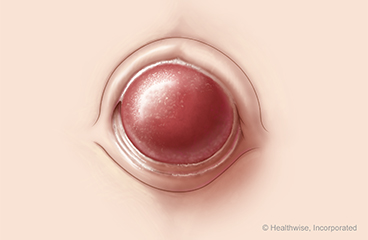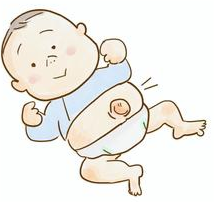Disclaimer [ENGLISH]
Umbilical Cord

- The umbilical cord is also known as the umbilical stump, belly button, umbilicus and navel.
- During pregnancy the umbilical cord transfers nutrients and oxygen from mother to baby.
- Immediately after birth, the cord is clamped and cut leaving behind a short stump that will dry up and fall off.
How to Care for and Clean the Umbilical Stump
Dry Cord Care & Bathing
- Keep the umbilical stump dry. Air contact helps the cord stay dry.
- As the stump dries, it will change colors, going from yellow, to brown, to gray or black.
- As the umbilical stump dries it may form a scab – let it heal and fall off on its own.
- Do not use rubbing alcohol – this can wipe away the good skin bacteria that help with healing.
- Sponge baths are ok while the umbilical stump is in place. Please avoid baths where the stump will be under water.
- If stool gets on the umbilical stump, you can gently wipe it with a clean warm washcloth. Be sure to dry it off right after wiping.
- Avoid covering the cord with the diaper. Keep the diaper folded below the cord.
Discharge and Drainage
- It is normal to have a small amount of clear, yellow or blood-tinged discharge.
- Gently dab the bottom of the cord and the surrounding skin with a clean, dry washcloth.
- Bleeding can occur if the umbilical stump rubs against a surface like clothing or diapers and when it is close to falling off.
- You may notice pinpoint bleeding on your baby’s clothing.
- A stain bigger than the size of a quarter is a sign of too much bleeding.
- If you see active bleeding, use a clean dry cloth to apply direct pressure to the umbilical stump. If bleeding continues after 10 minutes of constant pressure, call your child’s primary care provider.
Detachment of the Umbilical Stump

- The umbilical stump usually falls off 1-3 weeks after birth.
- It might look a little red or yellow where it is starting to separate.
- In some cases, a granuloma can form.
- These are small red “berry-like” growths that remain “wet” and can ooze a clear mucus.
- Treatment with silver nitrate is an option to discuss with your child’s primary care provider.
Infection of the Umbilical Stump
- Infection of the umbilical stump is very rare, but can be very dangerous.
- This is called Omphalitis
- Signs of an infection include: red skin around the umbilical stump, swelling around the umbilical stump, or cloudy, bad-smelling drainage.
- This is a medical emergency – please take your newborn the Emergency Department
Umbilical Hernias

- A hernia is a bulge at the area of the belly button.
- You may notice the hernia “pops out” when your baby cries, coughs, strains or passes a bowel movement. Some hernias always stay out – this is not cause for concern.
- In general, no treatment is needed for an umbilical hernia.
- They usually go away on their own by the age of 3.
- Avoid putting anything on your baby’s belly button – such as tape, coins, or “belly bands“. These practices can lead to skin irritation and increase the risk of infection – and they don’t help the hernia get better.
- However, if the hernia is a red or purple color and cannot gently be pushed back into the abdomen, this may be a medical emergency and your newborn will need to be evaluated in the Emergency Department.
Call your child’s healthcare team if:
- Their belly button is bleeding and does not stop after 10 minutes of applying direct pressure.
- Bleeding or cloudy drainage continues for more than 2 days in a row.
- Redness develops around the belly button and surrounding skin.
- The cord remains in place longer than 4 weeks.
- Your baby has a fever 100.4°F or more.
- Your baby is not acting normally.
- You think your baby needs to be seen.
This publication was adapted from information from American Academy of Pediatrics Patient Education materials.
Reviewed by: NG M.D., CPCMG Newborn Committee, AR D.O. | 05/2024


